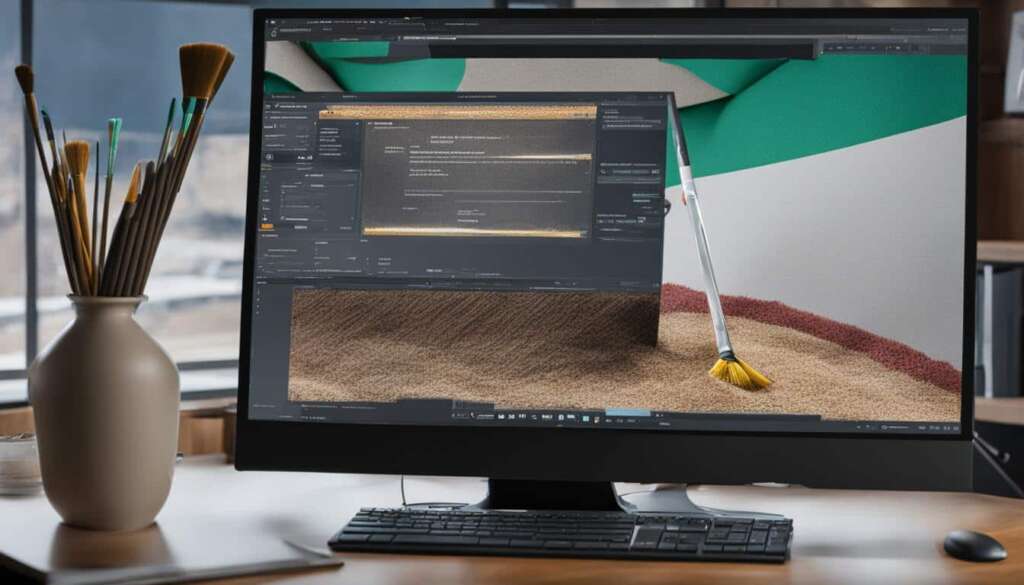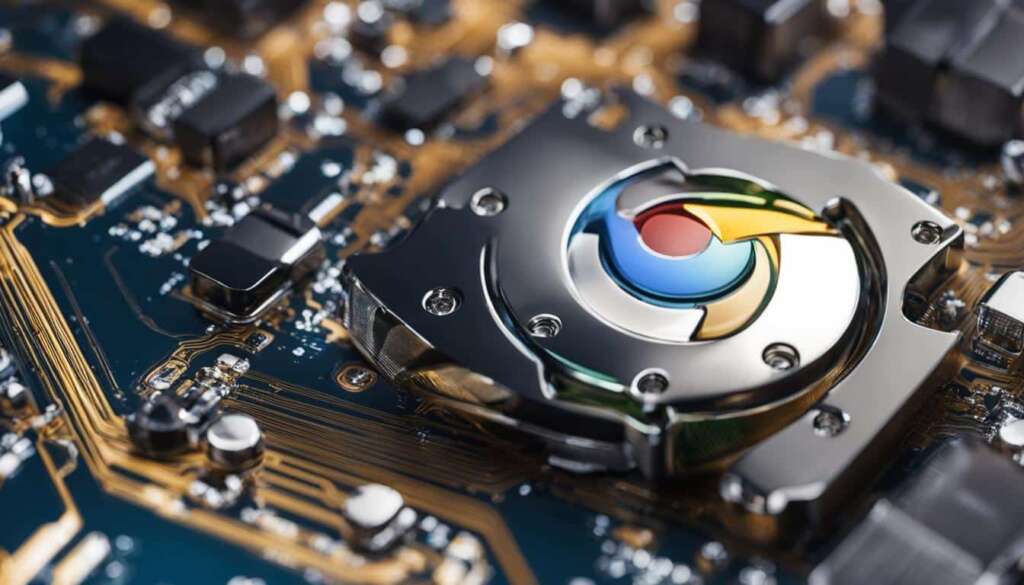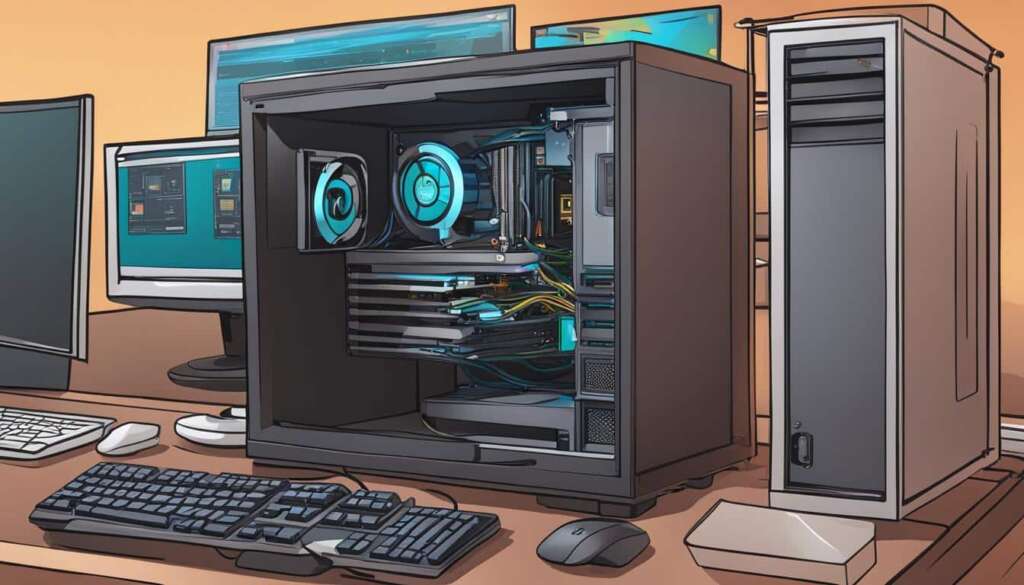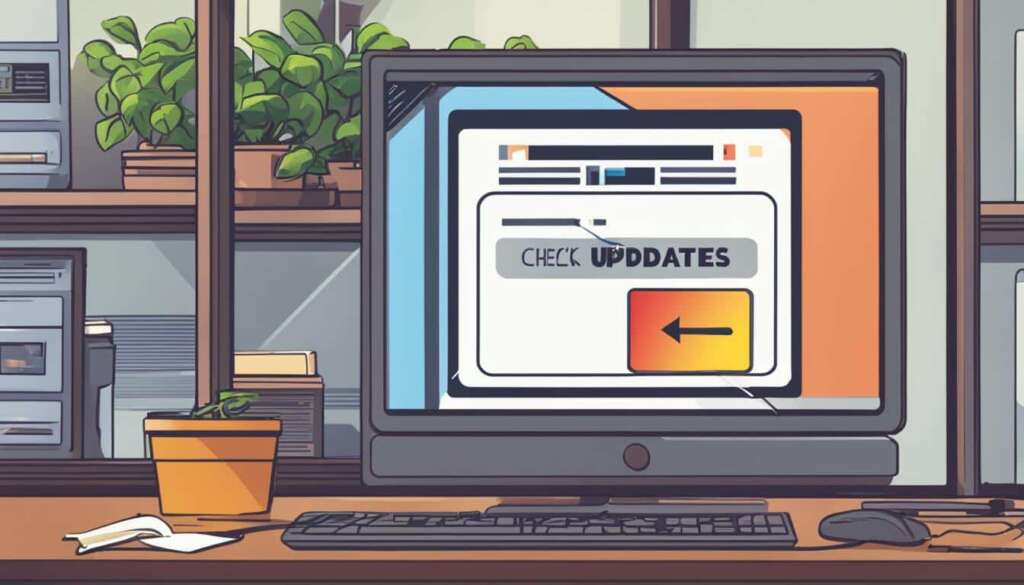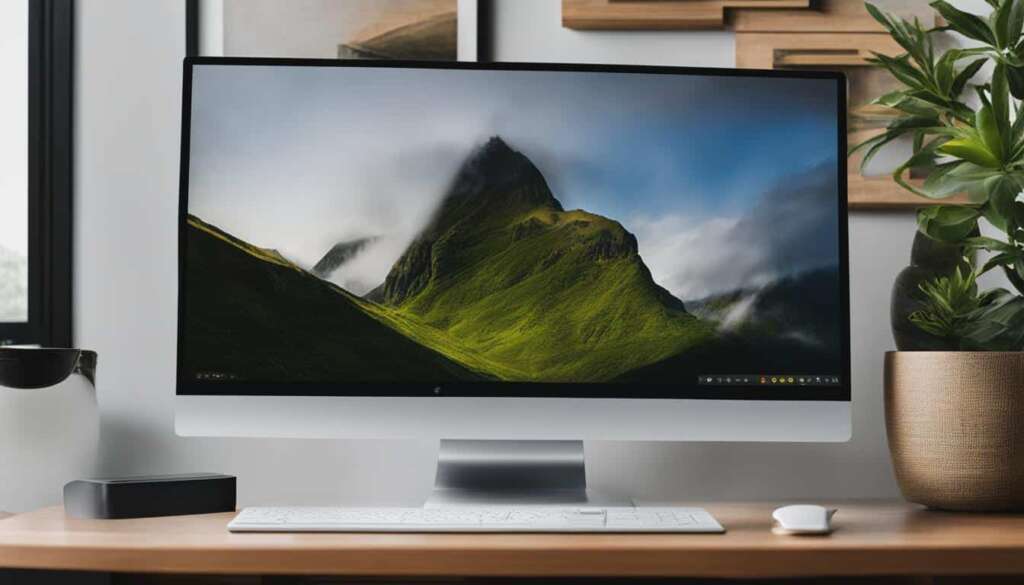Table of Contents
Regularly updating your drivers is essential for preventing compatibility issues and enhancing cybersecurity. Outdated drivers can lead to software and hardware conflicts, causing errors and malfunctions. Updated drivers often include security fixes, reducing the risk of vulnerabilities that cybercriminals might exploit. There are two primary methods for updating drivers on a PC: using Windows Update and Device Manager.
Key Takeaways:
- Updating drivers is crucial for preventing compatibility issues and enhancing cybersecurity.
- Outdated drivers can lead to software and hardware conflicts, causing errors and malfunctions.
- Updated drivers often include security fixes, reducing the risk of vulnerabilities.
- Two primary methods for updating drivers on a PC are using Windows Update and Device Manager.
- Choose a reliable driver update software if you prefer a more automated approach.
Updating Drivers using Windows Update (Recommended)
Updating drivers on your PC is an essential task to ensure optimal performance and compatibility. One convenient method for updating drivers is through Windows Update, a built-in feature of the Windows operating system. By utilizing Windows Update, you can easily keep your drivers up-to-date with just a few simple steps.
To update drivers using Windows Update, start by going to the Settings menu on your PC. From there, navigate to the “Update & Security” section, and then select “Windows Update.” Once you’re in the Windows Update menu, click on the “Check for updates” button to search for available updates.
After the scanning process is complete, you will see a list of available updates, including driver updates. To view the driver updates specifically, select the “View optional updates” option. Here, you can choose which driver updates you want to install. It’s recommended to install all available driver updates for optimal system performance and compatibility. Click on the “Download and install” button to begin the installation process.
Table: Supported Driver Updates via Windows Update
| Driver Type | Examples |
|---|---|
| Audio Drivers | Realtek, Creative, Conexant |
| Graphics Drivers | NVIDIA, AMD, Intel |
| Network Drivers | Realtek, Intel, Qualcomm |
| Bluetooth Drivers | Intel, Qualcomm, Broadcom |
| Printer Drivers | HP, Canon, Epson |
Updating drivers using Windows Update is generally a safe and reliable method. However, it’s important to note that Windows Update may not always have the latest version of drivers available. In such cases, it’s recommended to manually download and install the drivers from the manufacturer’s website. Additionally, it’s good practice to periodically check for driver updates using Windows Update to ensure your system is always up to date.
Updating Drivers with Device Manager
Device Manager is a built-in Windows tool that allows users to manage and update their device drivers. This method provides more granular control and can be particularly useful when specific devices are experiencing issues. To update drivers using Device Manager, follow these steps:
- Open Device Manager: Right-click on the Start button and select “Device Manager” from the context menu.
- Select the device category: Expand the category that corresponds to the device you want to update. For example, if you want to update your graphics driver, expand the “Display adapters” category.
- Update the specific device: Right-click on the specific device you want to update and select “Update driver” from the context menu.
- Search for drivers: Choose the option to search automatically for updated drivers. Windows will search for the latest drivers for your device online.
- Follow the instructions: If Windows finds a new driver, follow the on-screen instructions to install it. If Windows can’t find an update, you can visit the device manufacturer’s website to manually download and install the latest driver.
Using Device Manager to update drivers gives you more control over the process, especially when Windows Update doesn’t provide the latest drivers. It’s a reliable method for resolving compatibility issues and ensuring your devices are running optimally.
“Device Manager provides a straightforward way to update drivers and resolve compatibility issues. It’s especially useful for troubleshooting specific devices or when Windows Update doesn’t offer the latest drivers.”
Table: Driver Update Methods
This table provides a comparison of the two primary methods for updating drivers on a Windows PC: Windows Update and Device Manager.
| Method | Advantages | Disadvantages |
|---|---|---|
| Windows Update |
|
|
| Device Manager |
|
|
By understanding the advantages and disadvantages of these methods, you can choose the most suitable approach for updating drivers on your Windows PC.
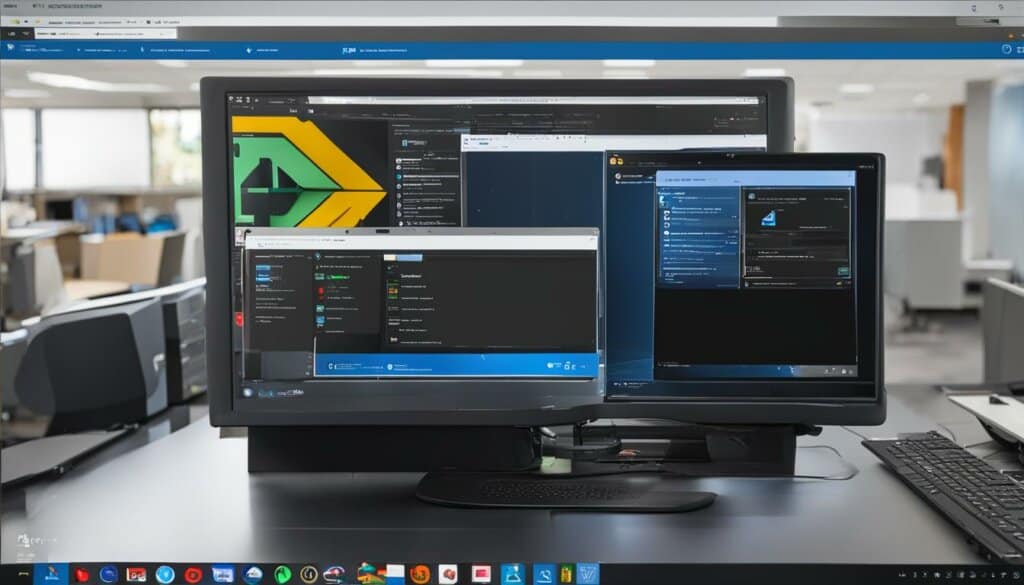
Benefits of Updating Drivers on PC
Regularly updating drivers on your PC can have numerous benefits that contribute to overall system performance, stability, and security. By ensuring that your audio, graphics, network, Bluetooth, and printer drivers are up to date, you can unlock a range of advantages for your computing experience.
Enhanced System Performance
One of the main benefits of updating drivers is improved system performance. Outdated drivers can cause lag, freezes, and crashes, leading to a frustrating user experience. By updating your audio drivers on Windows 10, for example, you can ensure that sound quality is optimized and audio playback is smooth, whether you’re enjoying music, watching videos, or playing games.
Optimal Functionality
Updating graphics drivers on Windows 10 is crucial for optimal functionality and compatibility with the latest software and games. Newer graphics drivers often include performance optimizations and bug fixes, allowing you to take full advantage of your graphics card’s capabilities and enjoy a seamless visual experience.
Enhanced Security
Keeping your network and Bluetooth drivers up to date is essential for maintaining a secure computing environment. Updated network drivers often include important security patches that protect against vulnerabilities and exploits. Similarly, updating Bluetooth drivers helps ensure that your devices are protected against potential security threats.
Improved Compatibility
Updating printer drivers allows for better compatibility with the latest printers and printing software. This ensures that you can seamlessly connect to and utilize your printer, without encountering any issues or compatibility errors.
In conclusion, updating drivers on your PC is crucial to enjoy optimal system performance, functionality, and security. By keeping your audio, graphics, network, Bluetooth, and printer drivers up to date, you can unlock enhanced system performance, ensure optimal functionality and compatibility, enhance security, and prevent potential compatibility issues. Regularly checking for driver updates and installing them promptly is an important practice for maintaining a smooth and efficient computing experience on your PC.
Choosing a Driver Update Software
If you prefer a more automated and convenient approach to updating drivers, you can use driver update software. With a myriad of options available, it’s important to choose a reliable and reputable software that prioritizes the safety of your system. Look for software that offers a large driver database, regular updates, and positive user reviews.
By utilizing driver update software, you can streamline the process of finding and installing the latest driver updates for your Windows 10 operating system. This software scans your computer for outdated drivers and downloads the appropriate updates, saving you time and effort. It ensures that your computer’s hardware components are running optimally and are compatible with the latest software.
However, it’s important to exercise caution when selecting driver update software. Be wary of potential scams or malware disguised as legitimate driver update software. Stick to trusted sources and perform thorough research before downloading any software onto your system. Additionally, always keep in mind that driver update software should be used as a supplement to manual driver updates, not as a replacement.
Table: Top Driver Update Software
| Software | Features | User Ratings |
|---|---|---|
| Driver Booster | – Large driver database – Automatic scanning – One-click driver updates |
4.5/5 |
| Driver Easy | – User-friendly interface – Expert support – Scheduled scans |
4.0/5 |
| Snappy Driver Installer | – Offline driver updates – Portable version available – Open-source |
4.2/5 |
| Driver Reviver | – Deep scan and backup – Driver exclusion feature – Restore point creation |
4.3/5 |
As seen in the table above, some of the top driver update software options include Driver Booster, Driver Easy, Snappy Driver Installer, and Driver Reviver. These software solutions offer a range of features, ease of use, and positive user ratings. However, it’s important to evaluate your specific needs and preferences before making a choice. Consider factors such as the size of the driver database, the level of automation, and the overall user experience.
Remember that driver update software can be a helpful tool in keeping your drivers up to date, but it should always be used in conjunction with manual driver updates and best practices. Stay vigilant, choose reputable software, and enjoy the benefits of an efficiently updated driver system.
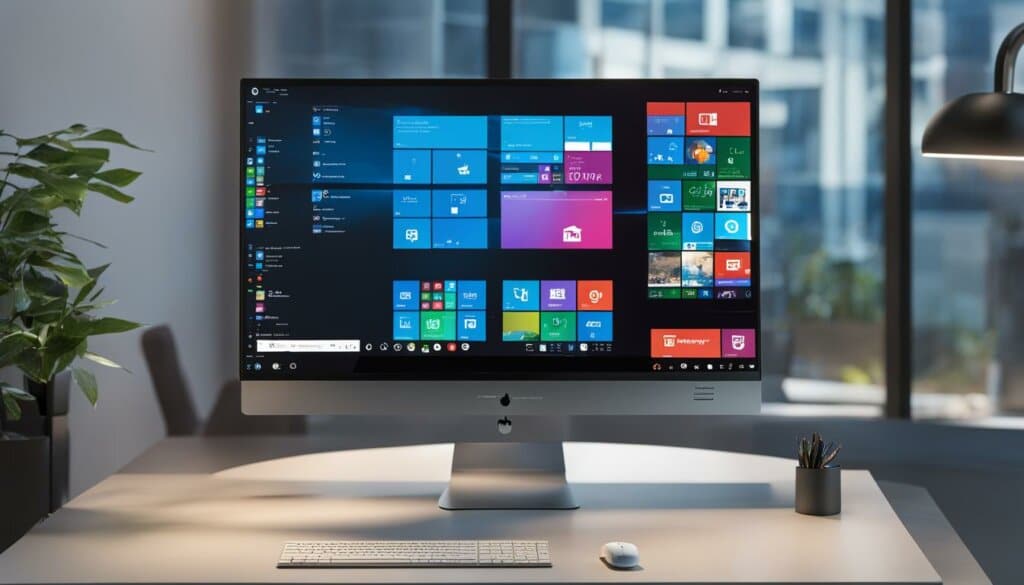
Other Considerations for Driver Updates
Updating drivers on your PC goes beyond using Windows Update and Device Manager. There are other important considerations to keep in mind to ensure your drivers are up to date and your system is running smoothly.
Checking if Drivers Are Up to Date
Periodically checking if your drivers are up to date is crucial, especially after major system updates or when encountering hardware-related issues. To check if your drivers need updating, you can:
- Visit the device manufacturer’s website: Most manufacturers provide driver updates on their websites. Locate the support or drivers section, enter your device model, and download the latest drivers for your specific hardware component.
- Use third-party software: There are various third-party driver update software available that can scan your system for outdated drivers and provide you with the necessary updates. Be sure to choose a reputable software to avoid potential risks.
Regardless of the method you choose, always ensure that you download drivers from trusted sources to avoid downloading malicious or incompatible software.
Updating Graphics, Audio, Network, Bluetooth, and Printer Drivers
Specific hardware components, such as graphics cards, audio devices, network adapters, Bluetooth modules, and printers, often require driver updates for optimal performance. The process for updating these drivers may vary slightly depending on the manufacturer and specific device. However, the general steps include:
- Identify the specific hardware component: Use Device Manager or consult the manufacturer’s documentation to determine the exact model and make of the device.
- Visit the manufacturer’s website: Go to the manufacturer’s website and navigate to the support or drivers section. Enter your device details and locate the latest driver updates for your particular hardware component.
- Download and install the drivers: Once you’ve found the appropriate driver updates, download them to your PC. Follow the installation instructions provided by the manufacturer to complete the update process.
Remember to restart your PC after installing driver updates to ensure the changes take effect.
Best Practices for Updating Drivers on PC
When it comes to updating drivers on your PC, following best practices is crucial to ensure a smooth and hassle-free experience. From creating a system restore point to downloading drivers from trusted sources, these practices can help you avoid compatibility issues and maintain the security of your system.
1. Create a System Restore Point
Before making any driver updates, it’s recommended to create a system restore point. This allows you to revert back to a previous state in case any issues arise during the driver update process. To create a system restore point on Windows 10, follow these steps:
- Go to the Start menu and type “Create a restore point” in the search bar.
- Select “Create a restore point” from the search results.
- In the System Protection tab, click on “Create…”
- Enter a descriptive name for the restore point and click on “Create”.
- Wait for the restore point to be created.
2. Download Drivers from Official Websites
When updating drivers, it’s important to download them from the manufacturer’s official website. This ensures that you’re getting the latest and most compatible drivers for your hardware. Avoid downloading drivers from third-party websites, as they may contain malware or outdated drivers.
3. Regularly Check for Driver Updates
Keeping your drivers up to date is essential for optimal performance and security. Make it a habit to periodically check for driver updates, especially after major system updates or when encountering hardware-related issues. You can check for driver updates on the manufacturer’s website or use driver update software to scan your system for outdated drivers.
By following these best practices, you can ensure that your PC’s drivers are up to date, improving system performance and stability. Remember to create a system restore point, download drivers from official sources, and regularly check for updates. With these practices in place, you’ll be able to enjoy the full potential of your hardware while keeping your system secure.
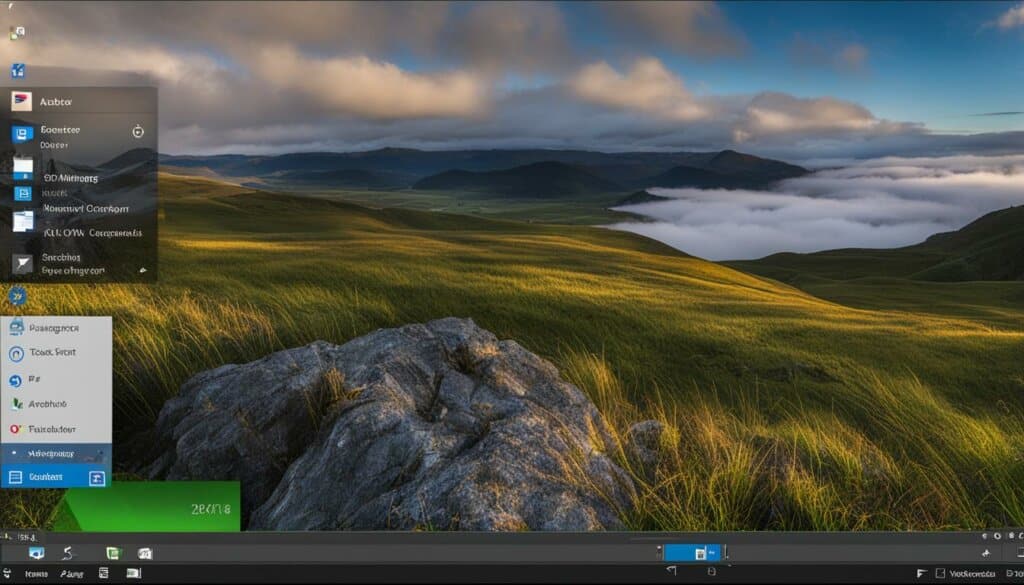
Conclusion
Updating drivers on your PC is essential for maintaining system performance, stability, and security. By regularly updating your drivers using methods such as Windows Update or Device Manager, you can prevent compatibility issues, enhance cybersecurity, and ensure optimal functionality of your hardware components.
Remember to use trusted sources for driver downloads and follow best practices to avoid any potential risks. Keep your drivers up to date and enjoy a smooth and efficient computing experience on your PC.
Follow our step-by-step guide to learn how to update drivers on your PC. Don’t forget to periodically check for driver updates and create a system restore point before making any changes. This way, you can easily revert back in case of any issues.
FAQ
How often should I update my drivers?
It is recommended to periodically check for driver updates, especially after major system updates or when encountering hardware-related issues.
How can I check if my drivers are up to date?
You can either visit the device manufacturer’s website to manually check for driver updates or use third-party software to scan for outdated drivers.
Is it necessary to create a system restore point before updating drivers?
Yes, it is advisable to create a system restore point before making any driver updates so that you can revert back if any issues arise.
Where should I download drivers from?
It is important to download drivers from the manufacturer’s official website to ensure compatibility and safety.
Are driver update software safe to use?
Yes, as long as you choose a reliable and reputable software. Look for software that offers a large driver database, regular updates, and positive user reviews. Beware of potential scams or malware disguised as driver update software.
Can updating drivers improve system performance?
Yes, updating drivers can boost system performance by up to 50%, ensuring a smooth and glitch-free experience.
What are the benefits of updating drivers?
Updating drivers allows you to take advantage of the latest features and functionalities of your hardware components, prevents compatibility issues, and enhances system stability.
How do I update drivers using Windows Update?
To update drivers using Windows Update, go to Settings > Update & Security > Windows Update. Click on “Check for updates” and then select “View optional updates.” From the list of optional updates, choose the driver updates you want to install and click on “Download and install.”
How do I update drivers with Device Manager?
To update drivers with Device Manager, right-click on the Start button and select Device Manager. Choose the device category you want to update, right-click on the specific device, and select “Update driver.” Then, click on “Search automatically for drivers” and follow any further instructions.
Why is it important to keep drivers up to date for cybersecurity?
Outdated drivers can lead to software and hardware conflicts, causing errors and malfunctions. Updated drivers often include security fixes, reducing the risk of vulnerabilities that cybercriminals might exploit.


